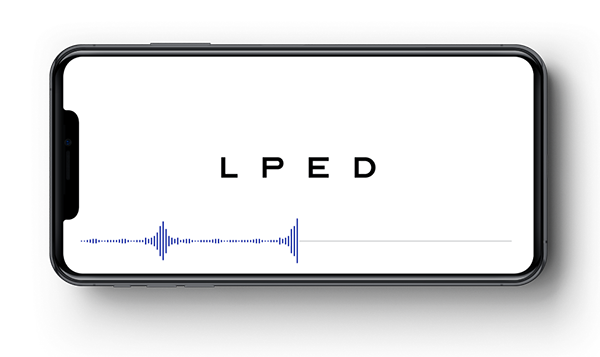Find an eye doctor near me.
Get your contact lenses for less.
You find a lower price, we'll beat it with our best-price guarantee.

Find my contacts
Renew your prescription from home.
Skip the trip to the doctor’s office. Take our online vision exam for only $20.

Renew my prescription
Eye Doctors Near You | 1-800 Contacts
%3C%3Fxml%20version%3D%221.0%22%20encoding%3D%22utf-8%22%3F%3E%0D%0A%3C!--%20Generator%3A%20Adobe%20Illustrator%2019.1.0%2C%20SVG%20Export%20Plug-In%20.%20SVG%20Version%3A%206.00%20Build%200)%20%20--%3E%0D%0A%3Csvg%20version%3D%221.1%22%20id%3D%22Layer_1%22%20xmlns%3D%22http%3A%2F%2Fwww.w3.org%2F2000%2Fsvg%22%20xmlns%3Axlink%3D%22http%3A%2F%2Fwww.w3.org%2F1999%2Fxlink%22%20x%3D%220px%22%20y%3D%220px%22%0D%0A%09%20viewBox%3D%220%200%20478%2058%22%20style%3D%22enable-background%3Anew%200%200%20478%2058%3B%22%20xml%3Aspace%3D%22preserve%22%20xmlns%3Aampsvg%3D%22http%3A%2F%2Fmedia.amplience.com%2F2016%2Fsvg-extensions%22%20width%3D%22300px%22%20height%3D%2236px%22%3E%0D%0A%3Cstyle%20type%3D%22text%2Fcss%22%3E%0D%0A%09.contacts-logo-0%7Bfill%3A%23FFFFFF%3B%7D%0D%0A%09.contacts-logo-1%7Bfill%3A%23FFFFFF%3B%7D%0D%0A%3C%2Fstyle%3E%0D%0A%3Cg%3E%0D%0A%09%3Cpolygon%20class%3D%22contacts-logo-1%22%20points%3D%2214.9%2C13.4%201.9%2C18.1%201.9%2C23.7%208.7%2C21.3%208.7%2C49.6%201.9%2C49.6%201.9%2C55.1%2021.7%2C55.1%2021.7%2C49.6%2014.9%2C49.6%20%09%22%2F%3E%0D%0A%09%3Cpath%20class%3D%22contacts-logo-1%22%20d%3D%22M60%2C26c4-2.3%2C6.2-6.3%2C6.2-11c0-7.1-6.3-13.1-13.7-13.1c-8.3%2C0-14.6%2C5.9-14.6%2C13.6c0%2C4.7%2C2.4%2C8.6%2C6.5%2C10.8%0D%0A%09%09c-5.6%2C2.4-9.2%2C7.8-9.2%2C13.9c0%2C8.9%2C7.5%2C15.9%2C17.1%2C15.9c9.4%2C0%2C17.1-7.3%2C17.1-16.4C69.4%2C33.9%2C65.6%2C28.4%2C60%2C26z%20M43.8%2C15.6%0D%0A%09%09c0-4.5%2C3.7-8.2%2C8.3-8.2c4.6%2C0%2C8.3%2C3.7%2C8.3%2C8.3c0%2C4.5-3.7%2C8.2-8.4%2C8.2C47.5%2C23.9%2C43.8%2C20.1%2C43.8%2C15.6z%20M52.2%2C50.5%0D%0A%09%09c-6.1%2C0-10.8-4.7-10.8-10.6c0-5.7%2C4.9-10.5%2C10.7-10.5c6%2C0%2C10.8%2C4.7%2C10.8%2C10.5C62.9%2C45.8%2C58.1%2C50.5%2C52.2%2C50.5z%22%2F%3E%0D%0A%09%3Cpath%20class%3D%22contacts-logo-1%22%20d%3D%22M93%2C12.3c-5.1%2C0-10.2%2C2.2-13.8%2C6.1c-3.4%2C3.5-4.8%2C7.4-4.8%2C13.1v5.4c0%2C5.9%2C1.7%2C10.2%2C5.5%2C13.8%0D%0A%09%09c3.6%2C3.5%2C8.3%2C5.4%2C13.2%2C5.4c5.2%2C0%2C10.2-2.2%2C13.9-6c3.3-3.5%2C4.7-7.5%2C4.7-13.2v-5.4c0-6-1.6-10.2-5.5-13.8%0D%0A%09%09C102.7%2C14.3%2C97.9%2C12.3%2C93%2C12.3z%20M105.4%2C36.9c0%2C3.3-0.4%2C5.9-2.2%2C8.5c-2.2%2C3.1-6.1%2C5-10.1%2C5c-3.9%2C0-7.6-1.8-9.8-4.8%0D%0A%09%09c-2.1-2.6-2.5-5.4-2.5-8.7v-5.3c0-3.2%2C0.4-5.8%2C2.3-8.4c2.2-3.1%2C6.1-5%2C10-5c4%2C0%2C7.7%2C1.8%2C9.9%2C4.8c2%2C2.6%2C2.4%2C5.2%2C2.4%2C8.7V36.9z%22%2F%3E%0D%0A%09%3Cpath%20class%3D%22contacts-logo-1%22%20d%3D%22M135.1%2C12.3c-5.2%2C0-10.2%2C2.2-13.8%2C6.1c-3.4%2C3.5-4.8%2C7.4-4.8%2C13.1v5.4c0%2C5.9%2C1.7%2C10.2%2C5.5%2C13.8%0D%0A%09%09c3.6%2C3.5%2C8.3%2C5.4%2C13.2%2C5.4c5.2%2C0%2C10.2-2.2%2C13.9-6c3.3-3.5%2C4.7-7.5%2C4.7-13.2v-5.4c0-6-1.6-10.2-5.5-13.8%0D%0A%09%09C144.8%2C14.3%2C140%2C12.3%2C135.1%2C12.3z%20M147.5%2C36.9c0%2C3.3-0.4%2C5.9-2.2%2C8.5c-2.2%2C3.1-6.1%2C5-10.1%2C5c-3.9%2C0-7.6-1.8-9.8-4.8%0D%0A%09%09c-2.1-2.6-2.5-5.4-2.5-8.7v-5.3c0-3.2%2C0.4-5.8%2C2.3-8.4c2.2-3.1%2C6.1-5%2C10.1-5c4%2C0%2C7.7%2C1.8%2C9.9%2C4.8c2%2C2.6%2C2.4%2C5.2%2C2.4%2C8.7V36.9z%22%2F%3E%0D%0A%09%3Cpath%20class%3D%22contacts-logo-0%22%20d%3D%22M200.5%2C42.7c-2.1%2C4.6-7.1%2C7.6-12.5%2C7.6c-8.3%2C0-14.8-6.2-14.8-14.1c0-8.1%2C6.3-14.4%2C14.4-14.4%0D%0A%09%09c5.1%2C0%2C9.9%2C2.7%2C12.6%2C6.9l0.2%2C0.3h5.4V16.7h-5.6v4.5c-3.5-3.4-7.9-5.1-12.8-5.1c-5.4%2C0-10.3%2C2.1-14.3%2C6.1c-3.7%2C3.7-5.7%2C8.8-5.7%2C14.1%0D%0A%09%09c0%2C10.8%2C9.3%2C19.8%2C20.3%2C19.8c8.8%2C0%2C16.5-5.2%2C19.4-13l0.3-0.7h-6.5L200.5%2C42.7z%22%2F%3E%0D%0A%09%3Cpath%20class%3D%22contacts-logo-0%22%20d%3D%22M230.4%2C16c-11.4%2C0-20.6%2C9-20.6%2C20.1c0%2C11%2C9.2%2C20%2C20.5%2C20c11.3%2C0%2C20.5-9.1%2C20.5-20.3%0D%0A%09%09C250.8%2C24.9%2C241.7%2C16%2C230.4%2C16z%20M230.3%2C50.4c-8%2C0-14.6-6.5-14.6-14.4c0-7.9%2C6.6-14.3%2C14.7-14.3c8%2C0%2C14.5%2C6.4%2C14.5%2C14.3%0D%0A%09%09C244.9%2C44%2C238.3%2C50.4%2C230.3%2C50.4z%22%2F%3E%0D%0A%09%3Cpath%20class%3D%22contacts-logo-0%22%20d%3D%22M291.8%2C33.5c0-5-1.4-8.4-2.2-10c-2.4-4.9-8.8-7.5-13.6-7.5c-5%2C0-9.5%2C2.2-12.2%2C5.8v-5.2h-12.3v5.5h6.4v27.4%0D%0A%09%09h-6.4v5.5h18.7v-5.5h-6.4v-15c0-3.1%2C0-6.4%2C2.4-9.2c2-2.3%2C5.3-3.7%2C8.5-3.7c2.1%2C0%2C7.2%2C0.4%2C9.4%2C4.3c1.6%2C2.7%2C1.7%2C5.6%2C1.7%2C9.2v14.4h-6.4%0D%0A%09%09v5.5h18.7v-5.5h-6.4V33.5z%22%2F%3E%0D%0A%09%3Cpath%20class%3D%22contacts-logo-0%22%20d%3D%22M308.3%2C39.5l0-17.3h8.4v-5.5h-8.4V3.2h-5.9v13.5h-7.3v5.5h7.3v18.4c0%2C10.4%2C4%2C15.5%2C12.2%2C15.5h2.7v-5.6h-2.7%0D%0A%09%09C308.3%2C50.4%2C308.3%2C44.9%2C308.3%2C39.5z%22%2F%3E%0D%0A%09%3Cpath%20class%3D%22contacts-logo-0%22%20d%3D%22M354.2%2C23.6c-3.6-5-8.7-7.5-15-7.5c-7.1%2C0-13.8%2C3.6-16.9%2C9.1l-0.1%2C0.2c-1.6%2C2.7-3.1%2C5.3-3.1%2C10.7%0D%0A%09%09c-0.1%2C3.9%2C1%2C7.6%2C3.1%2C11c3.4%2C5.6%2C10%2C9%2C17.1%2C9c6.1%2C0%2C11.5-2.7%2C15-7.4v6.4h11v-5.5h-5.1V22.2h5.1v-5.5h-11V23.6z%20M339.4%2C50.5%0D%0A%09%09c-7.9%2C0-14.6-6.6-14.6-14.3c0-7.9%2C6.6-14.4%2C14.8-14.4c8%2C0%2C14.6%2C6.4%2C14.6%2C14.3C354.3%2C44.1%2C347.8%2C50.5%2C339.4%2C50.5z%22%2F%3E%0D%0A%09%3Cpath%20class%3D%22contacts-logo-0%22%20d%3D%22M399.6%2C42.7c-2.1%2C4.6-7.1%2C7.6-12.5%2C7.6c-8.3%2C0-14.8-6.2-14.8-14.1c0-8.1%2C6.3-14.4%2C14.4-14.4%0D%0A%09%09c5.1%2C0%2C9.9%2C2.7%2C12.6%2C6.9l0.2%2C0.3h5.4V16.7h-5.6v4.5c-3.5-3.4-7.8-5.1-12.8-5.1c-5.4%2C0-10.3%2C2.1-14.3%2C6.1c-3.7%2C3.7-5.7%2C8.8-5.7%2C14.1%0D%0A%09%09c0%2C10.8%2C9.3%2C19.8%2C20.3%2C19.8c8.8%2C0%2C16.5-5.2%2C19.4-13l0.3-0.7h-6.5L399.6%2C42.7z%22%2F%3E%0D%0A%09%3Cpath%20class%3D%22contacts-logo-0%22%20d%3D%22M422%2C39.5l0-17.3h8.4v-5.5H422V3.2h-5.9v13.5h-7.3v5.5h7.3v18.4c0%2C10.4%2C4%2C15.5%2C12.2%2C15.5h2.7v-5.6h-2.7%0D%0A%09%09C422%2C50.4%2C422%2C44.9%2C422%2C39.5z%22%2F%3E%0D%0A%09%3Cpath%20class%3D%22contacts-logo-0%22%20d%3D%22M458.3%2C35.7c-2.8-1.6-6-2.3-8.8-2.8c-4.2-0.9-8-2-8-6.1c0-3.8%2C3.5-5.8%2C6.9-5.8c1.8%2C0%2C3.6%2C0.6%2C5%2C1.6%0D%0A%09%09c1.4%2C1%2C2.2%2C2.5%2C2.2%2C4.1l0%2C0.5h5V16.7h-5v2.4c-1.9-2-4.6-3.1-8.1-3.1c-3.3%2C0-8%2C1.1-10.5%2C4.3c-1.5%2C1.9-2.1%2C3.9-2.1%2C6.7%0D%0A%09%09c0%2C3.4%2C1.7%2C6.5%2C4.8%2C8.4c2.5%2C1.5%2C5.4%2C2.1%2C8.2%2C2.7l0.6%2C0.1c4.1%2C0.8%2C8.3%2C1.7%2C8.3%2C6.4c0%2C4.1-3.9%2C6.6-7.7%2C6.6c-4.9%2C0-8.7-3.1-9.2-7.4%0D%0A%09%09l0-0.5h-5v11.8h5v-3.3c2.3%2C2.8%2C5.7%2C4.3%2C10%2C4.3c5%2C0%2C9.8-2.4%2C11.6-5.8c0.9-1.6%2C1.7-3.5%2C1.7-6C463.3%2C40.7%2C461.5%2C37.5%2C458.3%2C35.7z%22%2F%3E%0D%0A%09%3Cpath%20class%3D%22contacts-logo-0%22%20d%3D%22M473.5%2C12.5c0-1-0.8-1.5-2.4-1.5h-2.2v5.7h1.2v-2.4h0.9l1.1%2C2.4h1.4l-1.3-2.6%0D%0A%09%09C473.1%2C13.8%2C473.5%2C13.3%2C473.5%2C12.5z%20M470.9%2C13.5h-0.8v-1.8h0.8c0.9%2C0%2C1.4%2C0.3%2C1.4%2C0.9C472.3%2C13.2%2C471.8%2C13.5%2C470.9%2C13.5z%22%2F%3E%0D%0A%09%3Cpath%20class%3D%22contacts-logo-0%22%20d%3D%22M474.6%2C10.3c-1-1-2.3-1.5-3.7-1.5c-1.4%2C0-2.6%2C0.5-3.6%2C1.4c-1%2C1-1.5%2C2.3-1.5%2C3.6c0%2C1.3%2C0.5%2C2.6%2C1.5%2C3.5%0D%0A%09%09c1%2C1%2C2.3%2C1.5%2C3.6%2C1.5c1.3%2C0%2C2.6-0.5%2C3.6-1.5c1-0.9%2C1.5-2.2%2C1.5-3.6C476.1%2C12.5%2C475.6%2C11.3%2C474.6%2C10.3z%20M474.1%2C16.9%0D%0A%09%09c-0.9%2C0.8-2%2C1.3-3.2%2C1.3c-1.1%2C0-2.2-0.5-3-1.3c-0.8-0.8-1.3-1.9-1.3-3c0-1.1%2C0.5-2.2%2C1.3-3.1c0.8-0.8%2C1.9-1.2%2C3.1-1.2%0D%0A%09%09c1.2%2C0%2C2.3%2C0.4%2C3.1%2C1.3c0.8%2C0.8%2C1.2%2C1.9%2C1.2%2C3.1C475.4%2C15%2C474.9%2C16.1%2C474.1%2C16.9z%22%2F%3E%0D%0A%3C%2Fg%3E%0D%0A%3C%2Fsvg%3E%0D%0A






